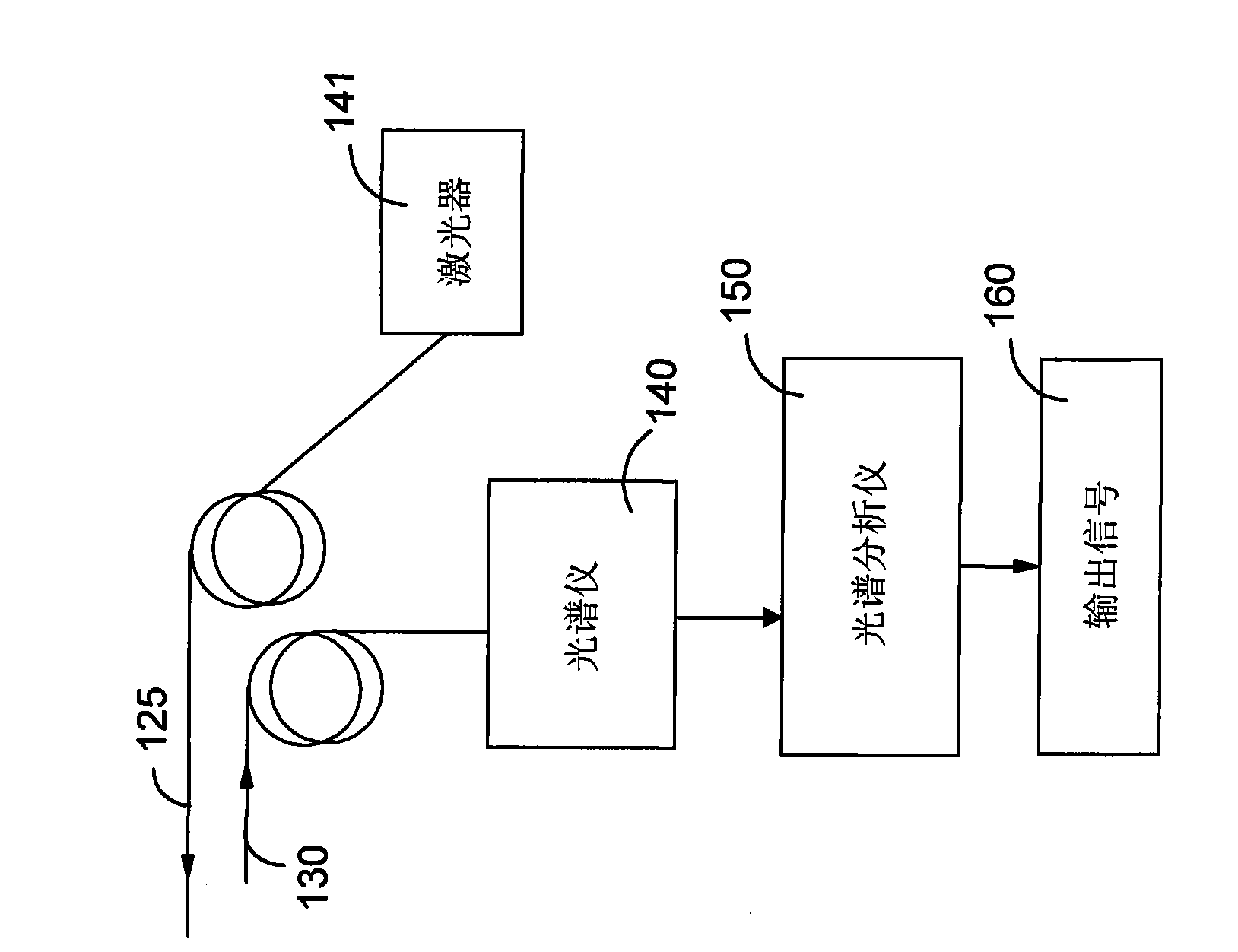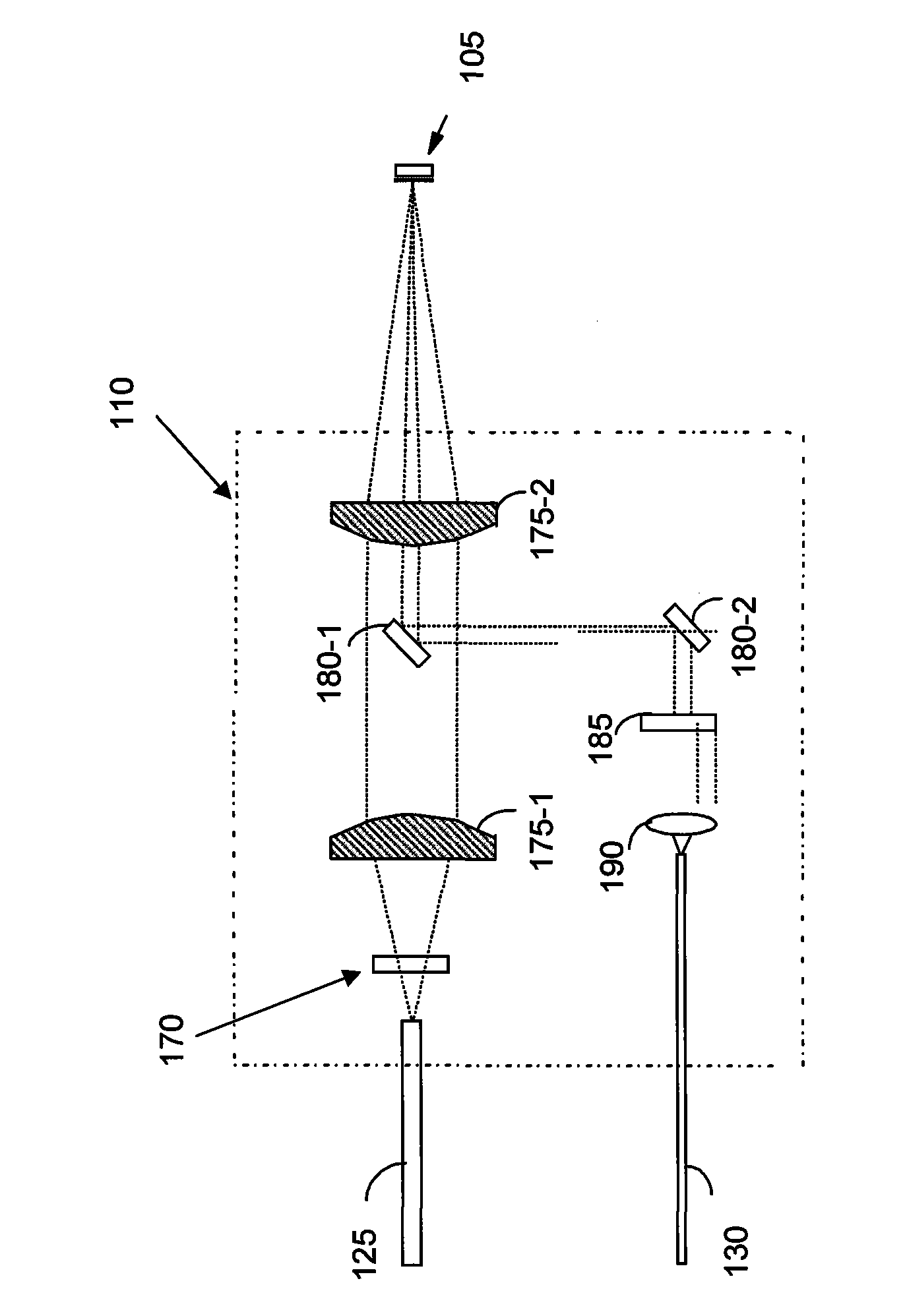Method for detecting chemical or biological substance
A chemical and biochemical technology, applied to the improvement of detection of chemical or biochemical substances, using light scattering probes and chemical detectors to detect chemical or biochemical substances, can solve the application limitations of Raman scattering detectors, pull Weak Mann scattering signal and other problems, to achieve the effect of short test period, easy operation and portability
- Summary
- Abstract
- Description
- Claims
- Application Information
AI Technical Summary
Problems solved by technology
Method used
Image
Examples
Embodiment Construction
[0057] see Figure 1A , a light scattering probe 100 includes a probe 110 and a detector 105 . The detector 105 includes a nanoscale surface structure. The nanoscale surface structure may include a plurality of nanopillars 108, such as Figure 1BAs shown, multiple nanopores, or other nanometer-sized surface structures. In some embodiments, nanoscale surface structures can be fabricated by coating the surface of the detector 105 with a colloidal suspension solution containing nanoparticles, as described below. The solution can then be evaporated and the nanoparticles deposited onto the surface.
[0058] Taking a nanosurface including nanopillars 108 as an example, a liquid sample can be introduced onto the nanopillars 108 of the detector 105 . The fluid sample may include bodily fluids of a patient or illicit drug user for disease diagnosis or determination of drug use. Examples of bodily fluids may include, but are not limited to, blood, saliva, urine, serum, tears, sweat...
PUM
| Property | Measurement | Unit |
|---|---|---|
| Average size | aaaaa | aaaaa |
| Average size | aaaaa | aaaaa |
Abstract
Description
Claims
Application Information
 Login to View More
Login to View More - R&D
- Intellectual Property
- Life Sciences
- Materials
- Tech Scout
- Unparalleled Data Quality
- Higher Quality Content
- 60% Fewer Hallucinations
Browse by: Latest US Patents, China's latest patents, Technical Efficacy Thesaurus, Application Domain, Technology Topic, Popular Technical Reports.
© 2025 PatSnap. All rights reserved.Legal|Privacy policy|Modern Slavery Act Transparency Statement|Sitemap|About US| Contact US: help@patsnap.com



